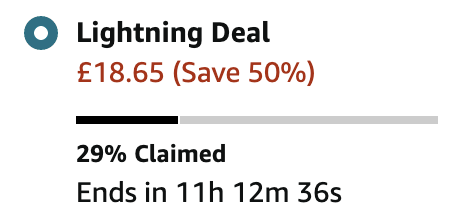There’s a reason Jeff Bezos is one of the richest men in the world. He knows his customers better than anyone else.
Right from the beginning, Bezos and his expert team wanted to know everything about us. What do we want to buy? How do we want to buy it? What is important to us? How do we behave online? What makes us more likely to buy?
The answers to these questions are what make Amazon what it is today: the world’s biggest retailer and a shopper’s nightmare for overspending.
Bezos knows us humans are very predictable creatures, and, from its very core, Amazon is built with consumer psychology in mind. There are little tricks all over the site that are purposely there to encourage us to spend more than we originally intended, or even buy things we don’t necessarily need.
Now we’re all for you spending money on the things you love and need. But what we’re not so keen on is you getting caught out by marketing tactics, so you end up overspending.That’s why we wanted to highlight a few of the main tricks, so you can be aware and outsmart them next time…
1) Scarcity – “You’ll miss out if you don’t act quick”
We bet you can’t remember a time when you were on Amazon and didn’t see a stock countdown like this:

These little alerts are very powerful. Not only do they suggest you need to act fast or you’ll miss out, but they also give you the impression that the product must be really good because ‘everyone’ is buying it.
Together, that’s a recipe for a rushed, impulse purchase so you need to recognise that’s what’s happening and try to apply a bit of rational logic to the situation so you don’t get caught up in it.
Yes, there may only be 5 left right now. But if it’s such a popular item, the seller will restock it because it’s in their best interest too. Also, Amazon isn’t the only stockist of most items so if, worse comes to worst, and they haven’t restocked when you’ve taken the time to decide the purchase is the right thing, then chances are you’ll be able to find the same product elsewhere anyway.
2) Urgency – “You’ll end up paying more if you aren’t fast”
Even down to the name ‘Lightning Deal’, everything about this alert is designed to make you think you don’t have enough time to think about the purchase:

Counting down the hours, minutes and seconds you have left of a deal and showing you how many people have already claimed it are classic tactics of creating urgency.
Imagine seeing that 99% had been claimed and there’s only 3m left, it’s inevitable you’re going to feel a little bit anxious and panic buy so you don’t miss out on the ‘savings’.It’s totally normal to want to get a good deal.
All we’d say is, is it really a good deal if it’s something you won’t use that much? Sometimes, the idea of saving 50% clouds our judgement and we end up forking out for things we eventually regret buying, meaning the saving isn’t really a saving at all – it’s actually money wasted.
That being said, if there’s a deal on something you’ve been wanting for a while and have properly thought the purchase through, then boom, you’re on to a winner!
3) Warped Perspective – “This buy is going to save you money”
Similarly to the previous point, even the way Amazon displays its non-lightening deals is designed to change the way you think:

Discounts have always been used as a marketing tactic to make us more likely to buy, but the way Amazon breaks it down is what takes this to the next level.
Most other retailers will just say: “here’s a 20% off code to apply at checkout” or show you the discount price alongside the full price, but that doesn’t make the end saving as clear.
It’s in our nature to think ‘if we’re saving money, we’re making a smart purchase’, so by breaking it down into three different lines and explicitly showing the amount you’re going to save, it puts it into practical terms and ultimately shifts your perspective to think ‘well, I’ll have more ££ in my pocket if I buy it now’.
It’s true, a saving is a good thing – but you’re only actually saving if you were going to buy it anyway at the full price. So, it’s important to take the time to decide whether the buy is something that will add value to you and your life. If it will and you have room in your budget, go for it! If it won’t, try not to get sucked in on the discount alone because it won’t be worth it.


.png)





